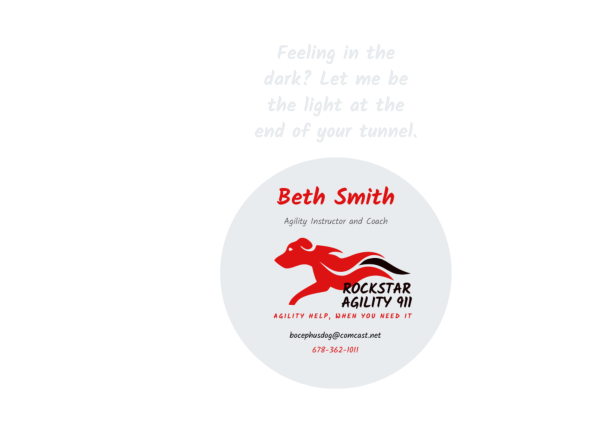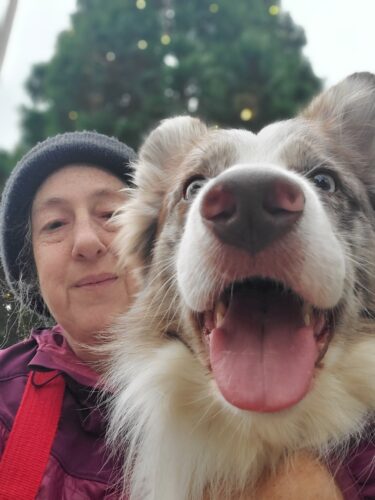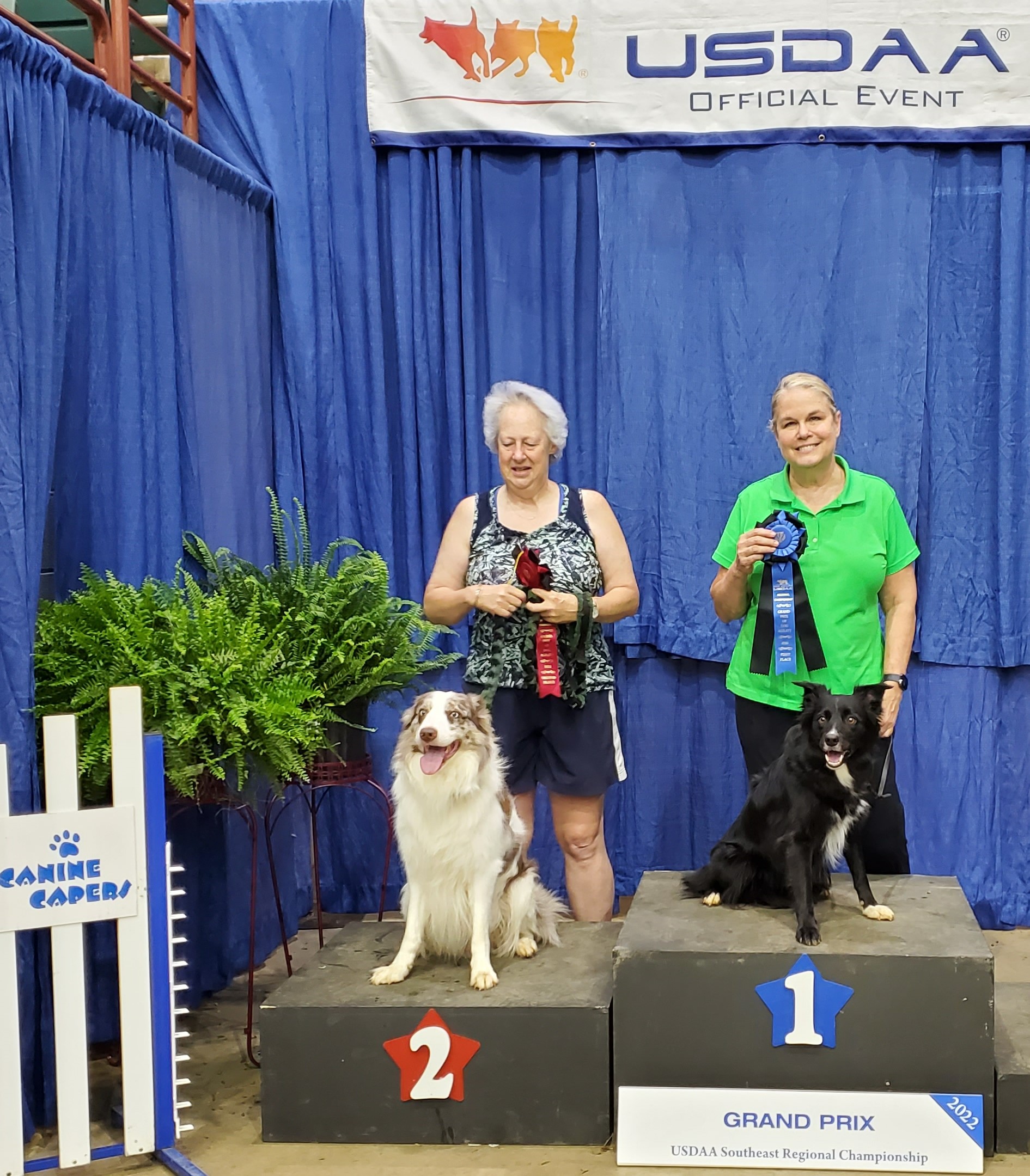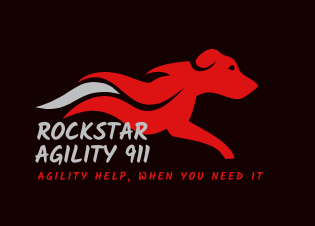


Who I Am
I am an enthusiastic agility competitor with over 22 years of experience in training and running my own dogs: 2 mixed breeds, a lab and a border collie.
For the last seven years I have instructed and coached many different breeds of dogs and their varied handlers for Sirius Dog Agility Training Center in Tucker, GA.

What I Do
My goal is to teach both the dog and the handler to work as an efficient team. I believe in choice-based training that allows the dog to have a say in what they do. The key is to finding motivation that works for each dog.
Dog Training
Good foundation skills and obstacle skills are the bedrock of agility. Whether you are looking to start from scratch or need to re-train or fine-tune a skill, I can help you achieve your desired obstacle performance and increase your dog's understanding of your handling commands.
Relationship building
A strong relationship between dog and handler is built on trust and communication. I can help you and your dog to communicate and understand each other better and feel less frustration.
Handling Skills
It is important to have a varied set of skills in your toolbox and, just as importantly, to know when to use each one. For example, I can help you learn not only how to do a rear cross but when it will work better than a front cross or just the same.
My Services
Private Lessons
Semi-privates may be available
Video Review
Quantity Discounts Available
Course Design
Full courses up to 20 obstacles
Quantity Discounts Available
Frequently Asked Questions
Why do you say agility training should start with a good foundation and not obstacle training?
It’s important to have a good working relationship with your dog, where you each know and understand your responsibilities. Foundation work forges and reinforces the bond, teaches the dog to watch the handler and follow the handler’s lead. It also allows the human to practice and become comfortable with handling and the dog to recognize and understand the handling the human is showing them before they are trying to sequence. Spending six months at the beginning to develop and polish the relationship and handling will allow for an easy transition to coursework later on.
Is any prior training required/helpful?
Basic obedience is helpful since the dog will need to be able to sit and stay sometimes and return to the handler when called. Having a working relationship already in place with your dog will make agility training much easier.
When can I start trialing?
Typically, it takes around a year of training but it really depends on the dog and handler team. Ideally it’s best to wait until the dog is able to do all of the equipment reliably. If you are still struggling with weaves but good with everything else then classes like jumpers, gamblers, tunnelers, FAST, etc., classes without required weaves are a good place to start. If the dog’s contacts are not reliable in class/training with some sort of reinforcement, then I would wait to enter any class where contacts are required.
Can any breed do agility? How can I tell if agility is something my dog will enjoy?
Yes, any breed can do agility but not every dog will enjoy it. Agility provides exercise and mental stimulation combined with food and/or toy rewards which is why a lot of dogs love it. Typically, dogs that enjoy learning new things as well as being active will find agility to be an important outlet.
What is a “two on, two off” (2o2o)? Why should I teach my dog to stop?
A 2o2o contact means that the dog stops on the contact obstacles (A-frame, dogwalk and teeter) with the rear 2 feet on the contact and the front 2 feet on the ground. There are yellow contact zones on the ends of each obstacle and, to receive a qualifying score in competition, the dog must touch the down contact zone. Even if you never want to compete, it is important to teach the dog to perform the obstacle correctly to prevent injury.
Except for small dogs and dogs with certain stride distances, I highly recommend and show handlers how to teach their dog to do a reliable stopped contact.
Is my body position important or just the words I use?
Dogs are looking for and reading many cues from their handler; verbal cues are just one dimension. Dogs are also looking at your feet, your chest (headlights), your arm position and your motion (near, lateral, accelerating (accel) or decelerating (decel). Handlers need to be aware of all of the cues they are giving their dog, whether intentional or not.
How do I teach distance and what do you mean by "support the obstacle"?
Distance, like speed, typically increases with the dog’s confidence and is something that should be approached gradually. If you usually run 3 feet from your dog you cannot expect them to suddenly be comfortable running 15 feet away from you. It’s best to increase lateral distance a step at a time while supporting the obstacle. By supporting, I mean to turn your chest towards the dog and obstacle and give them your attention. Your dog will be able to tell that they are doing what you are asking them to do.
How do I know if I should use a front cross or a blind cross?
Generally speaking, a blind cross can be used in place of a front cross but there are some situations where it is still better to use a front cross. I had a student tell me she was told to use a front cross to slow the dog down and a blind cross to maintain speed. That is a very simplistic way of looking at the two crosses and does not really explain why they do what they do or when to use them.
A front cross will slow a dog down because it is asking the dog to go into collection (shorten their stride) while a blind cross allows the dog to maintain extension or move into relative collection (a slightly shortened stride). As far as the handler is concerned, a blind cross is quicker and easier to execute than a front. Based on this, the decision of a blind vs. a front has more to do with the following obstacles.
So, when do you want to use a blind cross? Ideally, when you want to maintain extension. It’s great for when you need to make a cross but the next 2-4 obstacles are in a straight line. If there are no other obstacles close by, it may also be chosen for a quick and easy handler turn because there are fewer consequences if the dog makes a wide turn.
When do you want to use a front cross instead? If it is a sharp turn then you need more collection from the dog than the blind will give. It’s also better to use a front if there are other off-course obstacles close by. Lastly, if the course is circling, like a pinwheel, then the front allows the handler to the give the dog more information about the direction of the course because all the handler needs to do is to continue the rotation of the front to indicate the next obstacles.
Interested in learning more?
Click below to go to my services page.
Learn More
2nd place, Performance Grand Prix at the Southeastern Regional, Perry, GA - June 2022
We were thrilled to share the podium with our good friend Melody Jackson and her BC Stormy.
Melody and I have both had our share of dealings with the evil "C" word and we're still going strong.
One stinking refusal kept us from Qualifying but it couldn't keep us off the podium. It had only been a few months that I was able to run again, and I was so proud of Hauser for giving it his all, despite my slow handling.
